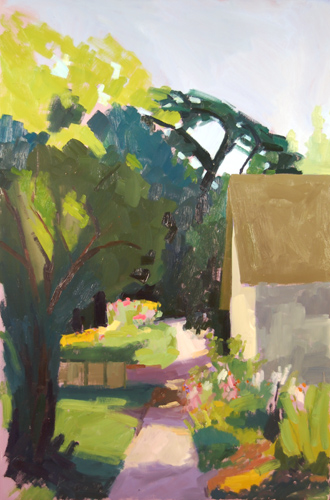My father had e-mailed me some questions about some of the paintings I did this summer, and specifically about this painting, his favorite.
JK: I had been wondering about how you view your paintings within your own learning
process?
KKM: Like anything in life you don't want to just repeat and repeat the same thing over
again. With chess or cards you don't want to become known for doing the same move or having
the same reaction. So when I chose a subject to paint, I try to keep in mind that I want to
approach it in a different way than I have approached other paintings. For example, in
Schuylkill River: Hazy Morning and Strawberry Mansion Bridge it's the same
bridge painted from nearly the same spot in nearly the same type of weather/light, but I tried
to tell the story of the bridge differently each time.
JK: When I see that amount of painting you do I had been wondering if you thought that
just painting and painting more was the way to learn and grow. But I thought you might have a
more deliberate set of things to work on in the midst of all the painting. So the point is to
have you tell me what kind of plan you are pursuing to refine you work?
KKM: I think of painting like writing fiction, the brush marks and colors are words.
Good fiction — while not true — feels true or has truth. As to the words, I think
of using the same colors and same types of brush marks like Hemingway's writing. Hemingway
hated a compound word, all his heroes were named Nick and everyone died of gangrene. So I have
been trying to get away from Hemingway-like brush marks, and I have been trying to train myself
to have more variety in the types of marks I make [...] like [the] writing of Paul Auster,
Paulo Coehlo or Tom Robbins. In taking the class I can get someone else to push me to see
things I have not seen or to focus on a new “intention” when choosing my subject.
There were two areas that I was interested in when I chose to paint this view: the play of the roofline
against the tree behind it, and the group of trees and bushes on the lower left. I liked the play of light and dark, deep greens and light greens. But in order to have those
areas be meaningful you have to give it a context. So when I started the painting it was
important to get those lights and darks in those areas — that was my intention. But as
you paint you can get distracted by other things in the view, things that you may not have
noticed at first, or maybe the light changes. Anyway, you have to keep remembering your
original intention and keep coming back to that.



